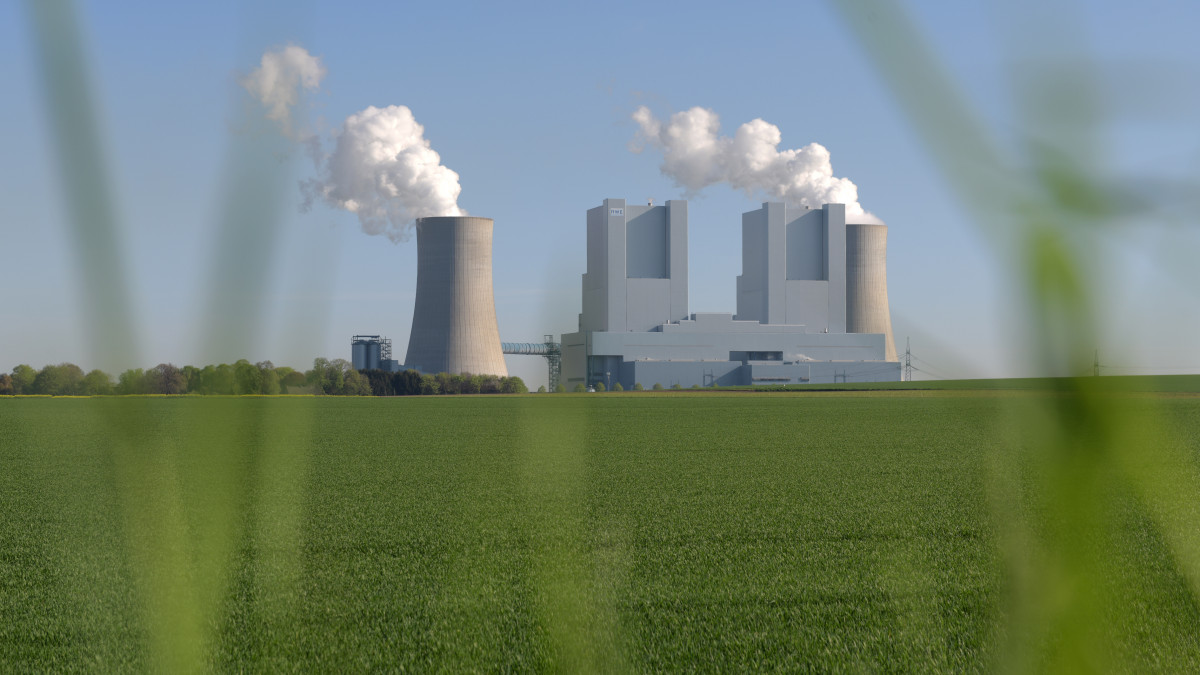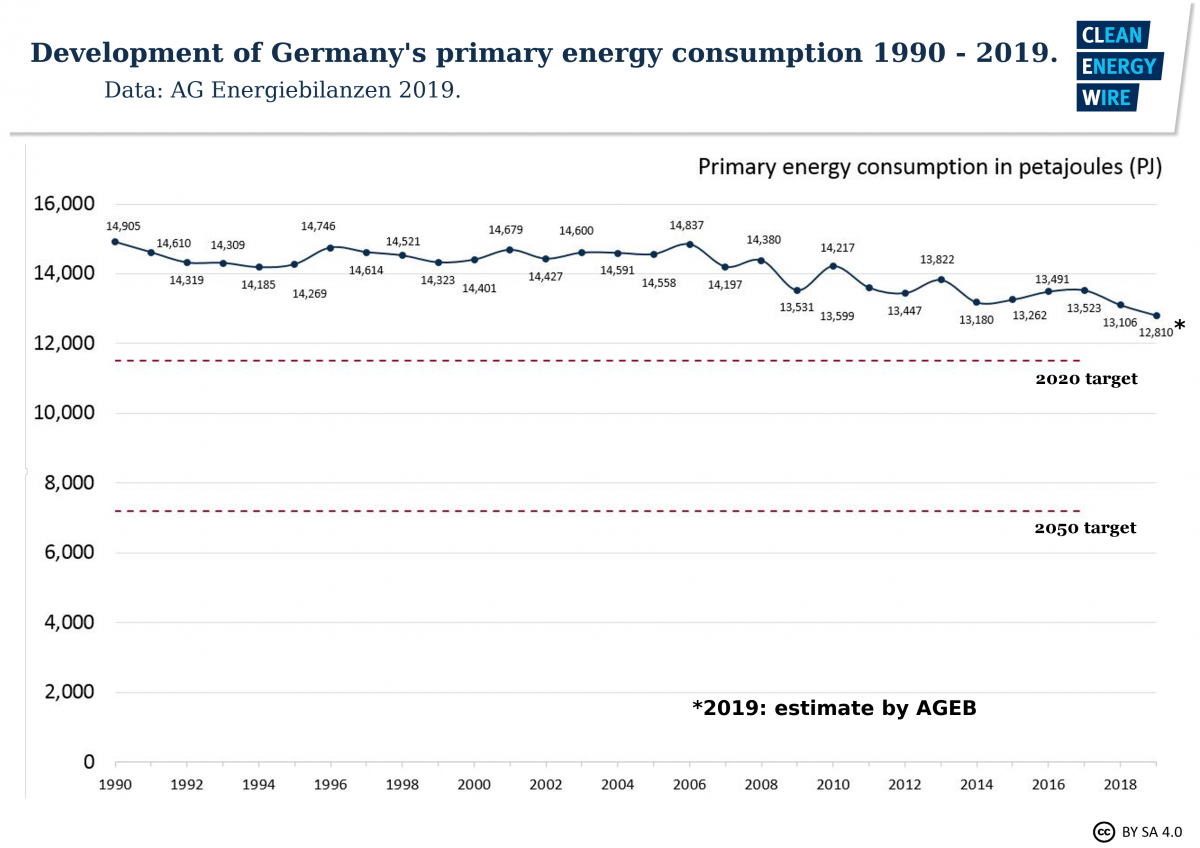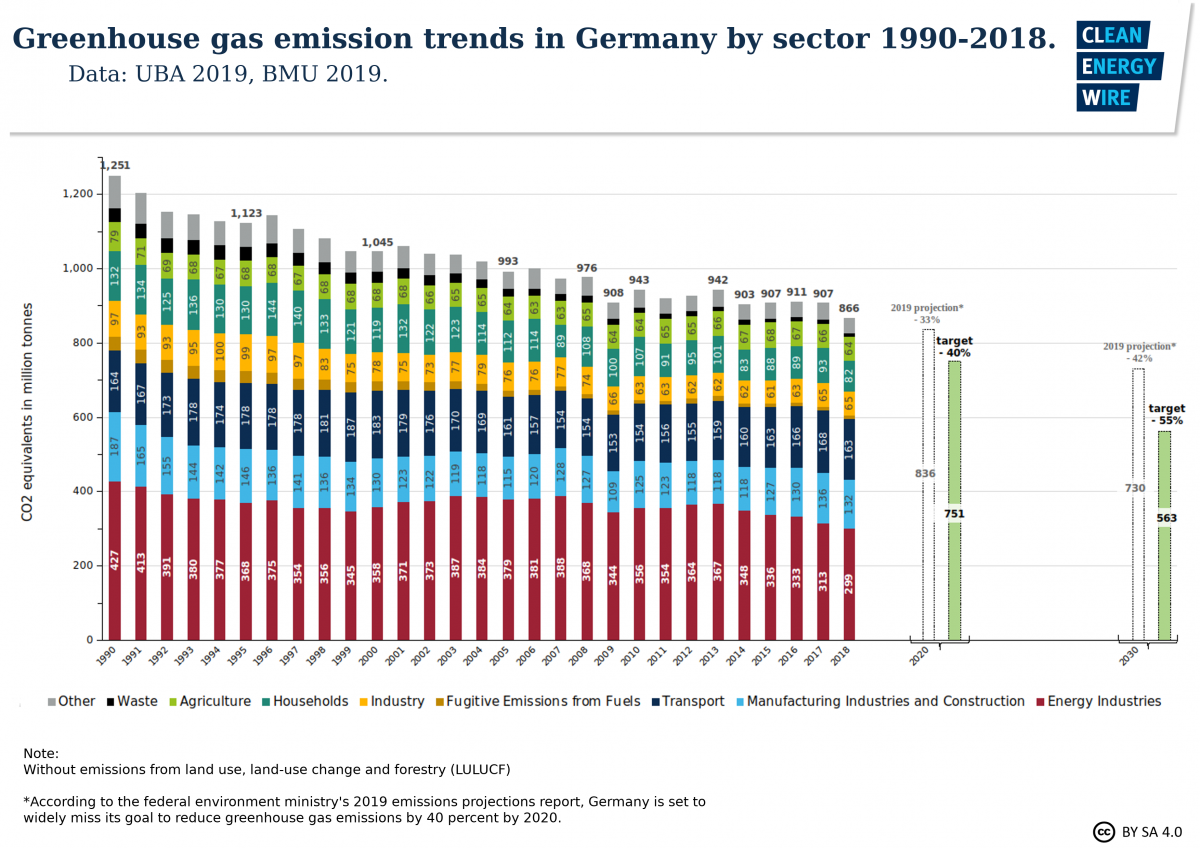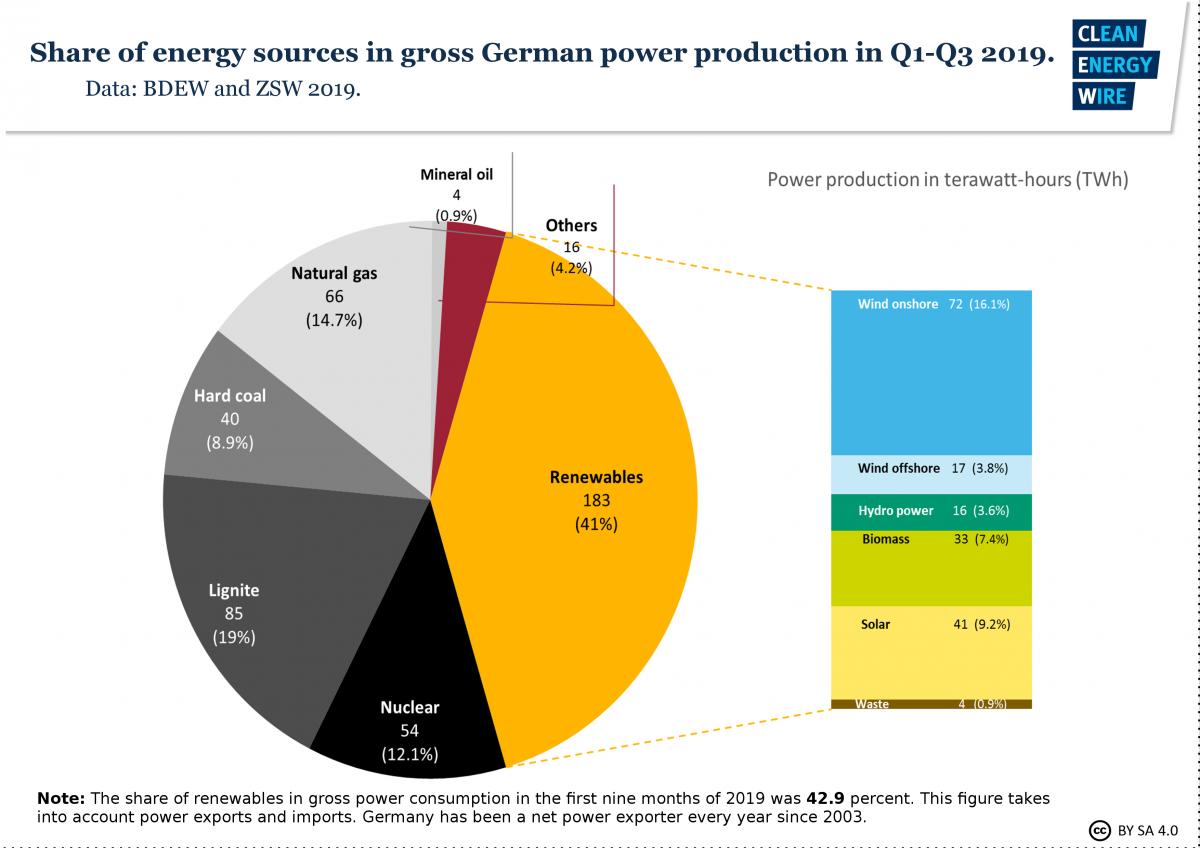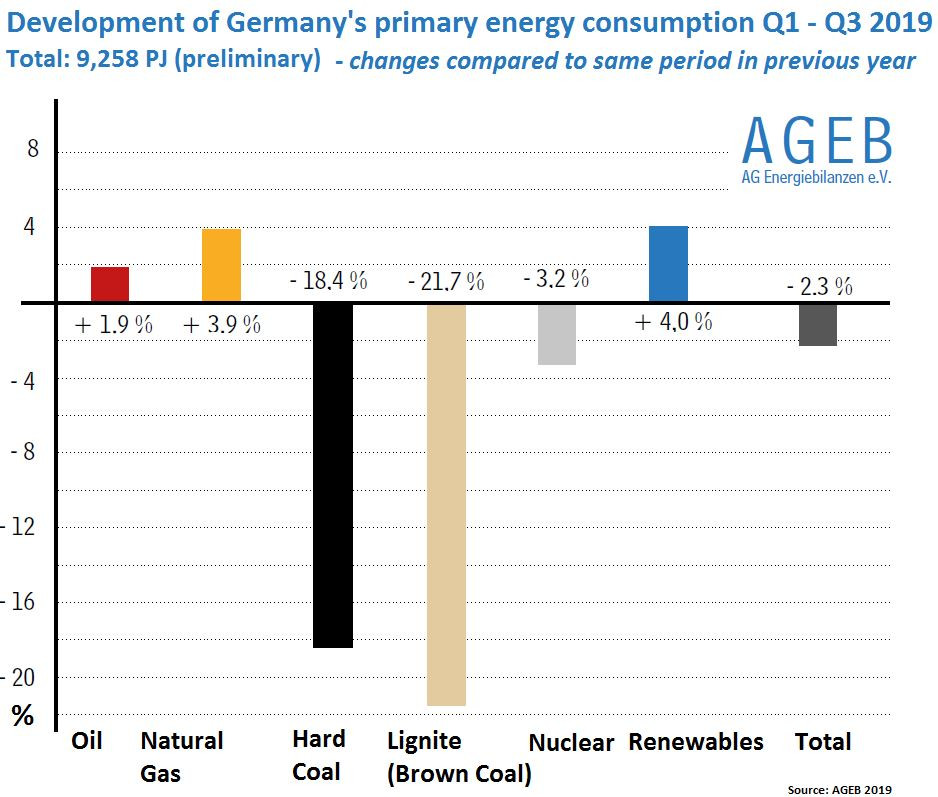Germany's CO2 emissions set to fall “markedly” in 2019 as energy use declines
Germany’s primary energy use will decline by more than two percent in 2019, and a significant drop in coal consumption is likely to lead to a “marked” decline of CO2 emissions as well, according to estimates by energy market research group AG Energiebilanzen (AGEB).
The group forecast that energy consumption will decrease to 12,810 petajoule (PJ) this year from 13,106 PJ in 2018 due to improved energy efficiency and lower demand in energy-intensive industries during the economic slowdown, outweighing adverse effects such as cooler weather and population growth.
Thus, Germany is headed for a significant drop in total greenhouse gas emissions this year. "The corresponding CO2 emissions reduction is likely to stand somewhere between 40 – 45 million tonnes,” Frank Peter, deputy executive director of energy think tank Agora Energiewende*, told Clean Energy Wire.
This would put total emissions in 2019 at about 825 million tonnes CO2 equivalents, or a 5 percent decreased compared to 2018. In 2018, Germany’s greenhouse gas emissions saw their largest drop since the 2009 recession, after largely stagnating for ten years.
Though the country has achieved a remarkable increase in renewable power generation as part of its landmark energy transition (Energiewende), its track record on cutting climate-damaging greenhouse gas emissions is mixed. One major reason is continued coal-fired power production. But the country is now eyeing a coal phase-out by 2038 at the very latest, and gross renewable electricity generation by far surpassed combined lignite and hard coal power production in the first nine months 2019.
Germany edges closer to 2020 climate target
This year’s developments are not due to government policy, said Peter. “What we see now is a market-driven reduction due to low natural gas prices and high prices for emissions allowances following the ETS reform.”
Germany was also reaping the benefits of its long-term renewable energy expansion, said Peter, but warned that “the current reduction path in the power sector will not last if the problems in wind power expansion persist. The climate package so far has failed to lock in any of these trends to ensure the reduction continues smoothly."
Projections have indicated for years that Germany would widely miss its national 2020 target of reducing greenhouse gas emissions by 40 percent compared to 1990 levels. However, should this and last year’s trend continue in 2020, Germany could come very close to reaching the goal.
By 2018, the country had reduced emissions by about 31 percent, and the latest projections calculated for the government expect a reduction of about 33 percent by 2020. However, these do not yet factor in the government coalition’s latest climate action decisions, such as the coal exit.
"The environment ministry's projection for 2020 of 33 percent reduction compared to 1990 levels will probably already be achieved this year,” Peter told CLEW. “Ultimately, the decrease could even be greater and reach 34 percent by the end of this year."
"We're currently making better progress than expected,” said Peter. However, he warned that "there's nearly zero progress in the transport and heating sectors. The AGEB figures show that heating oil use is actually increasing while there's no progress regarding diesel and petrol consumption."
Lignite and hard coal drop, renewables share set to reach record high
Renewable energy use increased by four percent, bringing its share in total primary energy consumption to 14.8 percent in the first nine months of 2019. This would be a record high, if the trend continued to the end of the year. In 2018, the renewables share stood at about 14 percent.
German coal use, meanwhile, continues its downward trend, especially in power production and heating. Here, hard coal use saw a steep decline of more than 30 percent, said AGEB, while hard coal use in steel production decreased 3 percent.
Total use of lignite fell 21.7 percent due to several units being mothballed and transferred to Germany’s security standby. The drop was also driven by increased renewable power generation, power plant overhauls and less lignite being produced at the Hambach mine in North Rhine-Westphalia. The mine is located next to the Hambach Forest, an ancient woodland that energy company RWE wants to cut down for coal mine expansion but which has become a symbolic battleground for climate activists from Germany and beyond. RWE long fought for its legal right to clear the forest but now says it is "quite possible" the forest will be preserved following a replanning of the nearby mine.
Reduced coal use and rising renewable power generation are the main drivers of the expected greenhouse gas reduction in 2019. Utility association BDEW said in a press release the sector reduced CO2 emissions by 40 million tonnes in the first nine months of 2019 alone, compared to the same period last year. “No other sector has so far succeeded in reducing CO2 emissions so drastically,” said BDEW head Stefan Kapferer.
The development was thanks to a high renewables share, the shutdown of some hard coal units, and a significant increase of EU ETS allowance prices, said BDEW.
Over the past year-and-a-half, the prices of CO2 allowances in the EU Emissions Trading System have risen markedly – from about 8 euros per tonne of CO2 in January 2018 to about 25 euros per tonne today. The price hike is a result of the newly implemented Market Stability Reserve, a mechanism which cuts oversupply of CO2 allowances on the market. This has had further effects. “Participants in the EU ETS – power companies and industrials – are becoming more aware of the high carbon cost,” Yan Qin, lead carbon analyst at Refinitiv, told Clean Energy Wire in July. “They are becoming more active in carbon risk management and in buying allowances.”
Germany to miss 2020 energy consumption target “by about half” - DENEFF
Germany aims to reduce primary energy consumption by 20 percent by 2020 (compared to 2008 levels). AGEB’s estimate would only mean a reduction of about 11 percent by 2019.
“Germany is still far off track and will likely miss the target by about half,” Christian Noll, managing director of the German industry initiative for energy efficiency (DENEFF), told CLEW. Due to the government’s policy shortcomings, Germany would not reach it until 2030, if nothing changed.
The developments of the last two years indicate that efforts by the last federal government could start to bear fruit, said Noll. However, measures decided by the current coalition government with the major climate action package this autumn “will hardly have an impact in terms of energy efficiency.” Noll sees the biggest need to catch up in buildings efficiency and transport. “However, this must not hide the fact that all sectors still have considerable economic energy efficiency potential untapped.”
AGEB named improved energy efficiency as one of the main reasons for reduced energy consumption in 2019. The group had recently reported that energy efficiency had improved by 3.2 percent in 2018. In order to produce products and services worth 1,000 euros, 4.5 gigajoule (GJ) of primary energy were used (4.7 GJ in 2017).
*Like the Clean Energy Wire, Agora Energiewende is a project funded by Stiftung Mercator and the European Climate Foundation.

